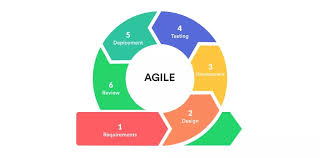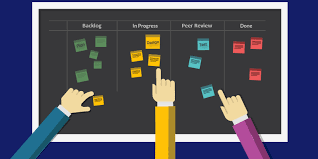The Software Product Development Life Cycle
Software product development is a complex process that involves several stages known as the Software Product Development Life Cycle. This life cycle consists of various phases that help in the successful development and deployment of a software product.
Planning
In this initial phase, the project requirements are gathered, analyzed, and documented. The project scope, budget, and timeline are defined during this stage.
Analysis
During the analysis phase, the gathered requirements are further refined and validated. This phase helps in understanding the end-users’ needs and expectations.
Design
The design phase involves creating a detailed technical design based on the requirements gathered in the previous phases. This includes architecture design, database design, user interface design, etc.
Implementation
In this phase, the actual coding of the software product takes place based on the designs created earlier. Developers write code following best practices and coding standards.
Testing
The testing phase involves rigorous testing of the developed software to ensure it meets all requirements and functions correctly. Various types of testing like unit testing, integration testing, system testing, and user acceptance testing are performed.
Deployment
Once the software has been tested thoroughly and approved by stakeholders, it is deployed to production environments for end-users to use.
Maintenance
The final phase involves maintaining and supporting the software product post-deployment. Bug fixes, updates, enhancements are done during this phase to ensure smooth operation of the software.
In conclusion, following a structured Software Product Development Life Cycle ensures that software products are developed efficiently and effectively while meeting all requirements and expectations.
8 Essential Tips for Navigating the Software Product Development Life Cycle Successfully
- Define clear and achievable goals for the software product.
- Involve stakeholders early in the planning phase to gather requirements and feedback.
- Use agile methodologies to iteratively develop and test the software.
- Ensure thorough testing at each stage of development to catch bugs early.
- Document all aspects of the software product, including design decisions and user manuals.
- Prioritize security measures throughout the development process to protect user data.
- Regularly review and adapt your development process based on feedback and lessons learned.
- Plan for scalability and future updates by designing a flexible architecture.
Define clear and achievable goals for the software product.
It is crucial to define clear and achievable goals for the software product during the initial stages of the Software Product Development Life Cycle. Setting specific objectives helps in guiding the development process, ensuring that all team members are aligned towards a common vision. Clear goals also help in measuring progress, tracking success, and making informed decisions throughout the development cycle. By establishing achievable goals, stakeholders can have a realistic understanding of what can be accomplished within the given timeline and budget, ultimately leading to a successful software product that meets user expectations.
Involve stakeholders early in the planning phase to gather requirements and feedback.
To enhance the success of a software product development project, it is crucial to involve stakeholders early in the planning phase. Engaging stakeholders from the outset allows for the gathering of comprehensive requirements and valuable feedback. By including stakeholders in the initial stages of the process, developers can ensure that the software aligns with the needs and expectations of end-users, ultimately leading to a more successful and user-centric product.
Use agile methodologies to iteratively develop and test the software.
In software product development life cycle, it is highly beneficial to utilize agile methodologies for iterative development and testing of the software. Agile methodologies allow for continuous feedback, collaboration, and adaptation throughout the development process, enabling teams to respond quickly to changes and deliver high-quality software efficiently. By breaking down the development process into smaller iterations or sprints, teams can focus on delivering working software incrementally, incorporating feedback from stakeholders along the way. This approach helps in ensuring that the final product meets user requirements effectively and promotes a more flexible and responsive development process.
Ensure thorough testing at each stage of development to catch bugs early.
To ensure a successful software product development life cycle, it is crucial to conduct thorough testing at each stage of development. By implementing rigorous testing procedures early on, developers can identify and rectify bugs before they escalate into larger issues. This proactive approach not only helps in maintaining the quality of the software but also saves time and resources by addressing potential problems at an early stage. Thorough testing at every phase of development ultimately leads to a more robust and reliable final product.
Document all aspects of the software product, including design decisions and user manuals.
In software product development, it is crucial to document all aspects of the software product, including design decisions and user manuals. Documenting design decisions provides clarity on the rationale behind certain choices made during the development process, which can be valuable for future reference or when troubleshooting issues. User manuals are essential for guiding users on how to effectively use the software product, enhancing user experience and reducing support queries. Comprehensive documentation ensures transparency, consistency, and ease of maintenance throughout the software product development life cycle.
Prioritize security measures throughout the development process to protect user data.
It is crucial to prioritize security measures throughout the software product development life cycle to safeguard user data. By integrating security practices from the initial planning stages to the final deployment phase, developers can ensure that sensitive information remains protected from potential threats. Implementing robust security protocols, conducting regular security audits, and staying informed about the latest cybersecurity trends are essential steps in maintaining the integrity and confidentiality of user data. Prioritizing security measures not only enhances user trust but also mitigates risks associated with data breaches and cyber attacks.
Regularly review and adapt your development process based on feedback and lessons learned.
Regularly reviewing and adapting your development process based on feedback and lessons learned is crucial in ensuring the success of software product development. By actively seeking input from stakeholders, team members, and end-users, you can identify areas for improvement and make necessary adjustments to enhance the efficiency and effectiveness of your development process. Embracing a culture of continuous improvement allows for better decision-making, increased productivity, and ultimately leads to the delivery of high-quality software products that meet the evolving needs of users.
Plan for scalability and future updates by designing a flexible architecture.
When embarking on the software product development life cycle, it is crucial to plan for scalability and future updates by designing a flexible architecture. By creating a system that can easily adapt to changing requirements and accommodate growth, you ensure that your software product remains relevant and efficient in the long run. A flexible architecture allows for seamless integration of new features and functionalities, making it easier to implement updates and enhancements as needed. This proactive approach not only saves time and resources but also ensures the longevity and success of your software product in the ever-evolving technological landscape.




